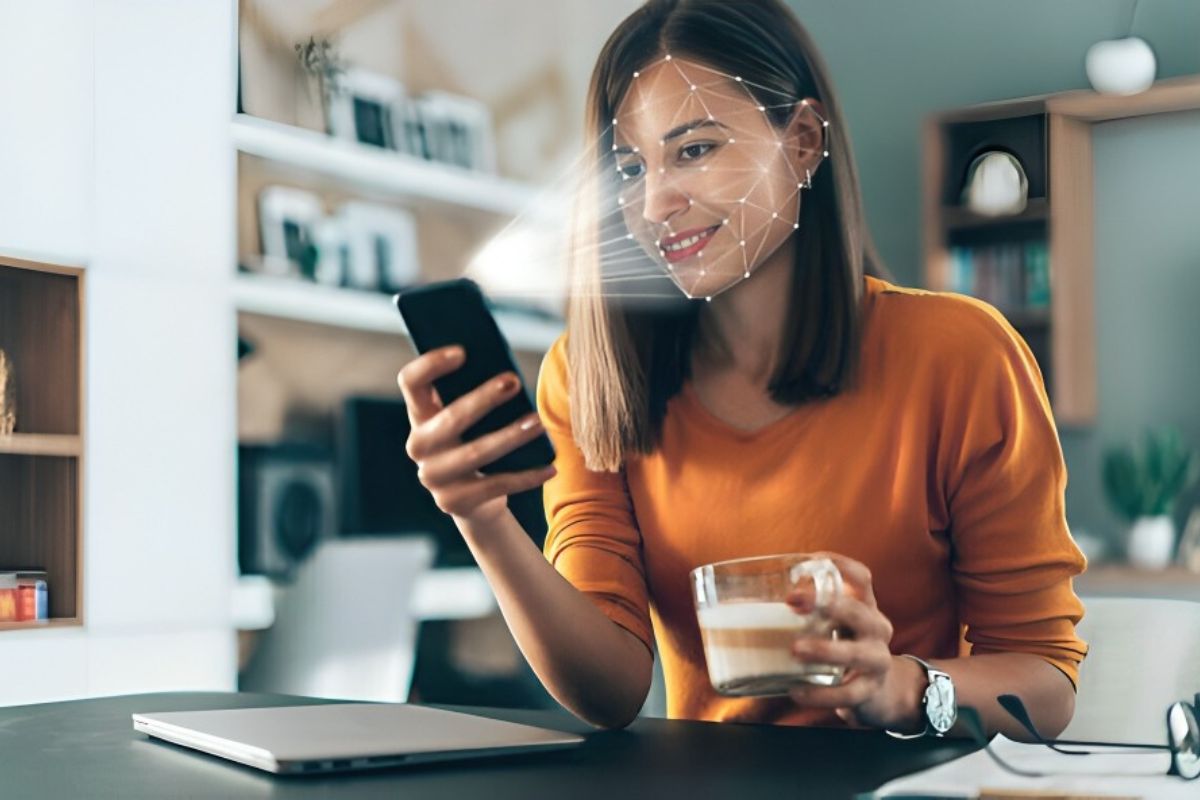In modern technology, the facial recognition system is perhaps one of the most innovative developments that are very much talked about nowadays. It identifies and verifies individuals based on the facial features that make it integral to various sectors. Technology development and advancement are contributing to more complexities in facial recognition systems and an array of uses in security, healthcare, retail, and in personal devices. In this paper, we have looked at what a facial recognition system is, how it operates, and what its role now is changing, with advantages and concerns, but also with further implications.
What is a Facial Recognition System?
The facial recognition system is a biometric technology that uses the facial features of an individual to identify or verify identity. The system captures a picture of the person’s face and then compares it to a pre-existing database in search of a match or not. A human face is unique in a number of characteristics such as the distance between the eyes, the shape of the nose, and jawline, among others that create a unique facial signature.
Biometric face recognition is primarily used in authenticating or authorizing access to secured areas, devices, or systems. Recently, such systems have become extremely popular in almost every sector because they are very convenient, speedy, and non-intrusive. Unlike other systems that use passwords or fingerprint scanners, facial recognition requires no active input from the user; hence it is less obtrusive.
How Does a Facial Recognition System Work?
To understand how a facial recognition system works, first,t break the process down to its most basic elements.
Image capture: The mechanism of face capture comes first in the biometrics part of facial recognition systems. It can come in the form of images captured in real-time by cameras or sensors. Or, on the other hand, it can also be pre-set photographs.
Feature Extraction: The computer now detects the features of the face or facial component which contains the eyes the nose; and the mouth. It then passes this image to the mathematical expression to create a “facial template.”
Database Matching: The extracted facial features are now presented to the face database of numerous facial templates for comparison until a match occurs and thus verifies the ID of a person.
Authentication or Identification: On match, it authenticates the person by confirming one’s identity or identifies the person with a database of known persons.
Automated facial recognition systems are good for almost all scenarios, dimly lit settings, without making much demand upon the user’s knowledge input.
History of Facial Recognition System
Who Invented the Facial Recognition System?
Biometric face recognition was invented in the 1960s, as early pioneers, including Woody Bledsoe, Helen Chan Wolf, and Charles Bisson, started conducting feasibility tests to recognize facial features with machines. However, the simple systems developed during that time did not gain broad acceptance because of their immaturity. The significant breakthrough came about in the 1990s with more sophisticated algorithms and powerful computers.
The companies, as represented by their product name, also created facial recognition applications for commercial uses back in the 2000s, during which many of them went further in developing commercially usable face recognition software. Most of these firms that present a lineup include a good number of brands like NEC, Face++, Cognitec Systems, and Ayonix to name just but a few of their deployments spreading widely throughout diverse economies into industrial sectors.
Sector role by facial recognition system
The most relevant application of biometric facial recognition systems is within security and law enforcement. Now, biometrics of facial recognition systems are introduced into surveillance systems, allowing for instant identification of the criminal or wanted person. The integration of facial recognition capabilities into security cameras, especially in public areas, enables authorities to track suspects and locate missing people more quickly.
Additionally, facial recognition systems have become popular in building access control systems. For example, business firms and governmental bodies install facial recognition systems with the aim of determining whether or not to grant security clearance. In this way, one eliminates the need for a physical key or a badge that facilitates easy and tight security measures.
Facial Recognition in Personal Devices
With the invention of personal devices such as smartphones, a Facial Recognition System works for extra security. Modern smartphones use facial recognition system software to authenticate users. For example, Apple’s Face ID uses a complex 3D facial scan to unlock access to the phone, which is a much safer system compared to the conventional password system. The biometrics ensure that only registered users can access their devices, thus an efficient and safe system.
Retail and Marketing Applications
Biometrics has also seen companies come up with facial recognition systems in the retailing sector to keep customers safe and happy at the same time. Thus, the behavior exhibited by the customer at different kinds of stores may be traced, and recommendations get personalized to be in line with the shopping behaviors of the clients.
Other companies producing facial recognition technologies are offering solutions that allow for the identification of VIP customers or banned persons. Luxury stores have even been known to apply facial recognition as a way to better offer loyalty-lier customers a customized experience, greetings, and services. However, there have been developed applications that create so many questions about privacy especially regarding the use of facial data without the owner’s consent.
Health Care and Patient Identification
Another application of facial recognition systems is emerging in the healthcare industry. Biometrics in facial recognition systems can be applied to identifying patients so as to reduce medical mistakes. Chances of misallocating wrong treatment to the wrong person will be eradicated because the person has been confirmed through the system in the hospital and clinic by identification through facial features.
Biometric face recognition can be used to improve the security of medical records. It just needs to connect the facial profile of a patient to their medical data; hence it will bar unauthorized access to confidential information.
Advantages of Facial Recognition System
1. Convenience and Effectiveness
The first advantage of Facial Recognition Technology is that it is convenient and fast. Unlike normal authentications, which can be accessed through a password or even a PIN code, the facial recognition system undergoes a faster, hand-free scenario. One does not need to remember hard passwords, and it can spot a person even at a distance.
2. More Security
Since facial features vary from one person to another, biometric facial recognition systems are highly secure. For example, people’s passwords get stolen or guessed. No one can replicate other people’s facial features. The above reasons made automated facial recognition systems reliable for safeguarding sensitive regions and personal machines.
3. Non-Intrusiveness
The facial recognition technology is non-intrusive and non-intrusive to the user; it does not touch or come into contact with the user. It is a perfect option for access control and surveillance systems. This aspect has made it the preferred choice in different public and private sectors, where convenience and security are key concerns.
4. Scalability
Another major benefit of facial recognition system software is that it is highly scalable. Be it a small business using it for access control or a large corporation using it to monitor hundreds of employees, the technology can easily be scaled up to meet the needs of any organization.
5. Cost-Effectiveness
Although the initial installation of facial recognition may be highly expensive, long-term costs are very low. Assured by automation and less reliance on human elements, the operation cost would be manageable, and hence comparatively inexpensive for many businesses and public services.
Ethical Considerations and Privacy Concerns
Despite all these benefits, there are several critical ethical and privacy concerns related to this biometric face recognition technology. The biggest concerns in the debate over facial recognition have arisen on issues relating to surveillance, consent, and data protection.
For example, biometrics facial recognition has been welcomed by governments, considering its usage in identification areas that are publicly visited where citizens feel uneasy about being watched and space invasion. Many argue that certainly there must be some misuse when monitoring individuals without them knowing or having granted permission to be monitored.
Future of Facial Recognition Systems
The future of the facial recognition system is very promising. With the advancement of technology, we can expect facial recognition system software to be even more accurate and efficient. Innovations such as 3D facial recognition and the integration of AI could further enhance the system’s capabilities, making it an indispensable tool in various fields.
Indeed, facial recognition systems are highly powerful technologies in changing how people live. They would provide improvements both for security and for convenience and even heighten customer experiences. Nonetheless, with such extensive applications and a greater embedding within everyday lives, there are implications to think through the ethics or push into concerns about the loss of protection of privacy and security.








